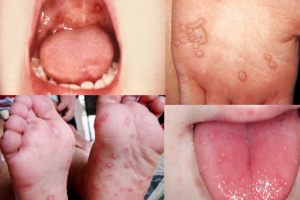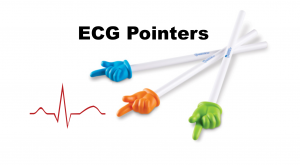EBM Update: Steroids in Severe CAP and CT in Post ROSC OHCA
#1: Dequin PF, Meziani F, Quenot JP, et al; CRICS-TriGGERSep Network. Hydrocortisone in Severe Community-Acquired Pneumonia. N Engl J Med. 2023 May 25;388(21):1931-1941.
- Question: In adult patients admitted to the ICU with severe CAP, does hydrocortisone compared to placebo reduce 28-day all-cause mortality?
- Double-blind, placebo-controlled multicenter RCT
- Included 795 patients > 18 years admitted to the ICU with severe PNA
- Intervention: Hydrocortisone as a continuous infusion of 200 mg/day IV with a planned taper for 8 or 14 days compared to placebo
- Primary Outcome: All-cause mortality at 28 days
- Hydrocortisone 6.2% vs. Placebo 11.9%, NNT 18
- Trial stopped early, potentially overinflated results
- Author Takeaway: Among patients with severe community-acquired pneumonia being treated in the ICU, those who received hydrocortisone had a lower risk of death by day 28 than those who received placebo
#2: Meduri GU, Shih MC, Bridges L, et al; ESCAPe Study Group. Low-dose methylprednisolone treatment in critically ill patients with severe community-acquired pneumonia. Intensive Care Med. 2022 Aug;48(8):1009-1023.
- Question: In adult patients admitted to the ICU with severe CAP, does methylprednisolone compared to placebo reduce 60-day all-cause?
- Prospective, multi center RCT.
- Included 584 patients > 18 years admitted to ICU with severe PNA based on IDSA/ATS criteria
- Primary Outcome: 60-day all-cause mortality
- Hydrocortisone 16% vs. placebo 18%, adjusted OR 0.90 (95% CI 0.57-1.40)
- Trial likely underpowered.
- Author Takeaway: No difference in mortality at 60 days with methylprednisolone vs. placebo in severe CAP
#3: Wu JY, Tsai YW, Hsu WH, et al. Efficacy and safety of adjunctive corticosteroids in the treatment of severe community-acquired pneumonia: a systematic review and meta-analysis of randomized controlled trials. Crit Care. 2023 Jul 8;27(1):274.
- Meta-analysis with 7 trials, 1689 patients.
- NNT 16 for reduction in 30-day all-cause mortality; NNT 7 for reduction in need for mechanical ventilation.
Bottom Line:
- Consider steroids for patients with severe CAP being admitted to ICU.
- DRIP Score: https://www.mdcalc.com/calc/4050/drug-resistance-pneumonia-drip-score
- Azithromycin associated with reduced mortality in severe CAP admitted to ICU. Reyes LF, Garcia E, Ibáñez-Prada ED, et al. Impact of macrolide treatment on long-term mortality in patients admitted to the ICU due to CAP: a targeted maximum likelihood estimation and survival analysis. Crit Care. 2023 May 31;27(1):212.
#4: Branch KRH, Gatewood MO, Kudenchuk PJ, et al. Diagnostic yield, safety, and outcomes of Head-to-pelvis sudden death CT imaging in post arrest care: The CT FIRST cohort study. Resuscitation. 2023 Jul;188:109785.
- Question: In adult patients with ROSC post OHCA, does protocolized head-to-pelvis sudden death CT (SDCT) improve the diagnostic yield in comparison to standard practice?
- Prospective observational pre/post cohort study including patients successfully resuscitated from OHCA without a clear diagnosis who were stable for CT
- Excluded < 18 years, DNR, obvious cause of arrest, severe renal dysfunction, known cardiomyopathy or obstructive CAD
- Control (Pre): Standard approach for diagnosis post-arrest but eligible for SDCT
- Intervention (Post): SDCT with three scans – noncontrast head, ECG-gated thoracic CTA, abd/pelvis venous phase within 6 hours
- Primary outcome: Diagnostic yield of SDCT compared to standard practice to identify cause of arrest
- Secondary outcome: Time to diagnosis, % correct diagnosis, diagnosis of time critical dgx, delayed dgx, AKI
- Results
- Standard care enrolled 143 of 273; SDCT enrolled 104 of 307
Included 584 patients > 18 years admitted to ICU with severe PNA based on IDSA/ATS criteria - Primary Outcome: Diagnosis of cause of OHCA in 92% of SDCT vs. 75% in standard care
- Secondary Outcomes: No difference in mortality, AKI, identified time critical diagnosis; SDCT – reduced time to diagnosis and delay in diagnosis of time critical conditions
- Standard care enrolled 143 of 273; SDCT enrolled 104 of 307
- Author Takeaway: “SDCT scanning early after OHCA resuscitation safely improved the efficiency and diagnostic yield for causes of arrest compared to the standard of care alone.”
- Considerations: Observational, many excluded, 2/3 of SDCT not scanned, adjudication of primary endpoint, patient centered outcomes not the primary outcome
- Key questions: When, Where, Type of CT and CCTA?
Bottom Line:
- CT head, gated CTA, venous abd/pelvis may improve early diagnosis; no difference in survival to discharge.
- CT can provide important information. Consider CT on the way up to the ICU once stabilized.








